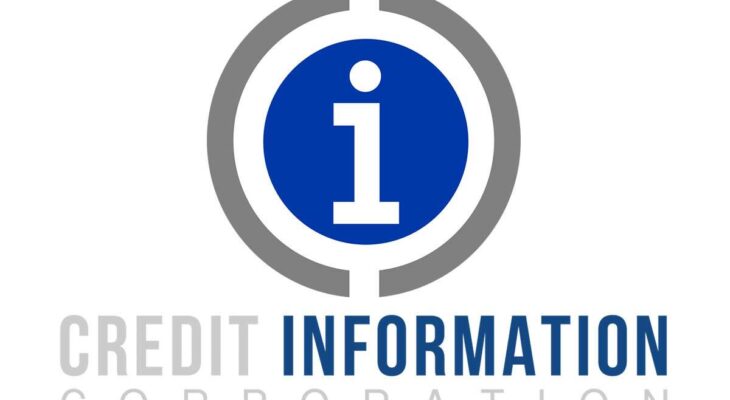In the labyrinthine world of finance, where lending and borrowing converge, the Credit Information Corporation (CIC) stands as a sentinel of fiscal responsibility. Have you ever pondered the allure of sidestepping loan repayments or credit card dues, believing you can elude accountability and subsequently secure fresh loans down the road?
The CIC’s expansive domain encompasses this very quandary, administering vigilance over loan transactions, ensuring equitable lending practices, and fostering a robust credit environment. The present discourse embarks on an exhaustive exploration of the Credit Information Corporation in the Philippines, unearthing its role, objectives, services, and impact on the financial landscape.
A Glimpse into the Terrain of Credit Registries
The enigma of a credit registry, as elucidated by the World Bank, materializes as a mechanism to buttress governmental supervision of financial institutions. Its foundation lies in the imperative that loans surpassing a defined threshold demand registration within the national credit registry. Serving as a diligent custodian, this registry scrutinizes loans emerging from regulated financial entities, curbing potential recklessness. Its ambit transcends mere loans, spanning loan applications, installment plans, credit card balances, and even utility bill settlements. A symphony of intricate data harmonizes into credit reports, offering an intricate mosaic of one’s financial well-being.
Deciphering the Mosaic: The Genesis of the Credit Information Corporation (CIC)
The Credit Information System Act (CISA), a.k.a. Republic Act No. 9510, unfurled the auspicious arrival of the Credit Information Corporation. A central credit repository, it weaves the tapestry of standardized information gleaned from financial institutions, unveiling the kaleidoscope of borrowers’ credit histories and fiscal standings. The Governance Commission for Government-Owned and Controlled Corporations (GCG) orchestrates its orchestration, convening a 15-member Board of Directors. Governmental ownership clasps 60% of the corporation, while the remaining 40% vests in associations like the Rural Bankers Association of the Philippines (RBAP) and the Bankers Association of the Philippines (BAP).
Unraveling the Odyssey: Tracing CIC’s Evolution in the Philippines
The year 2015 unfurled the mantle of CISA, propelling credit facility institutions into the fold of credit data submission per the Implementing Rules and Regulations (IRR). The ensuing years witnessed the CIC’s credit information system (CIS) maturation, buttressed by endeavors to enlighten financial institutions and the populace about its pivotal role. An incremental phase ensued, progressively flinging open its database for validation, initially catering to financial institutions furnishing credit data. The year 2019 marked a watershed moment with the public gaining access to credit reports via online appointments, a feat eased by the Online Dispute Resolution Process (ODRP).
A Quintessential Pursuit: Unveiling CIC’s Fundamental Objective
The CIC’s paramount goal is elegantly simplistic—furnishing independent, precise, and trustworthy credit information on Filipino borrowers. This ethos burgeons into fostering a paradigm shift, transforming individuals and corporations into exemplars of conscientious borrowing. By consolidating credit information within Philippine borders, the CIC galvanizes lenders to astutely assess borrower profiles, effectively tempering credit risk. The reliance on collateral recedes, streamlining loan approval via distilled credit reports.
The Panoply of Services: CIC as the Vortex of Credit Intelligence
At the core of CIC’s spectrum lies the provision of credit reports—a compendium of borrowers’ financial narratives. These archives span loan covenants, utility affiliations, and other authorized obligations. Augmented by an online dispute resolution mechanism, consumers can rectify inaccuracies within data submitted by entities. The CIC’s initiatives cascade further, encompassing accessing entity certification and in-house technical training for institutions contributing credit information. The educational arsenal encompasses pamphlets and storybooks, an endeavor to impart the essence of credit information to the masses.
Access Granted: A Rendezvous with the CIC’s Credit Repository
Egress to the CIC’s sanctuary is a privilege bestowed exclusively upon accredited credit bureaus and Special Accessing Entities (SAEs). These conduits embellish their suite with services ranging from web portal access to credit scoring. Accessing entities can procure credit reports at PHP 55 each, augmented by a temporary PHP 10 per credit report inquiry fee until the culmination of December 31, 2020.
Guardian of Privacy: CIC’s Precarious Dance with Data Confidentiality
Basking in exemption from the Data Privacy Act of 2012, the CIC embraces cutting-edge technology to erect bulwarks against data breaches. A rigorous Know-Your-Customer (KYC) ballet guarantees data sanctity during credit report procurement. Borrower authorization remains the lodestar guiding financial entities’ forays into borrowers’ credit reports.
A Tapestry of Transparency: CIC’s Foray into Disclosure
Aligned with the Credit Information System Act, financial institutions embark on a journey of enlightenment, notifying existing borrowers of their duty to funnel credit data to the CIC. The CIC, in turn, embeds a clarion clause in loan applications, casting a spotlight on the submission of credit data. Transparency proliferates through the CIC’s official online bastion, a wellspring of updates, advisories, and operational intricacies. An ever-evolving list of submitting entities extends clarity, conferring insight into affiliations with financial institutions. This symbiotic transparency empowers borrowers to enhance their creditworthiness, wielding their credit reports as beacons of fiscal rectitude.
Denouement: Cultivating Credit Consciousness
In the grand tapestry of fiscal affairs, credit assumes a pivotal role—an instrument potent enough to shape destinies. It behooves each Filipino to fathom this impact. Confronting the labyrinthine corridors of the Credit Information Corporation should awaken a dormant financial acumen, encouraging responsible borrowing. Trust in the CIC’s pledge to cultivate accurate, dependable credit information—a veritable compass steering borrowers toward financial zeniths.
Conclusion
In closing, the CIC emerges as a lodestar in the realm of finance, orchestrating a symphony of credit histories, obligations, and accountability. Akin to a sentinel, it safeguards against the whims of irresponsible borrowing, nurturing a culture of fiscal prudence. As you traverse the complex labyrinth of lending and credit, be cognizant that your financial decisions resonate beyond the present—rippling through your credit history and echoing in the corridors of financial institutions. The CIC underscores that in the symphony of finance, each note matters, contributing to the harmonious composition of a robust credit landscape.




